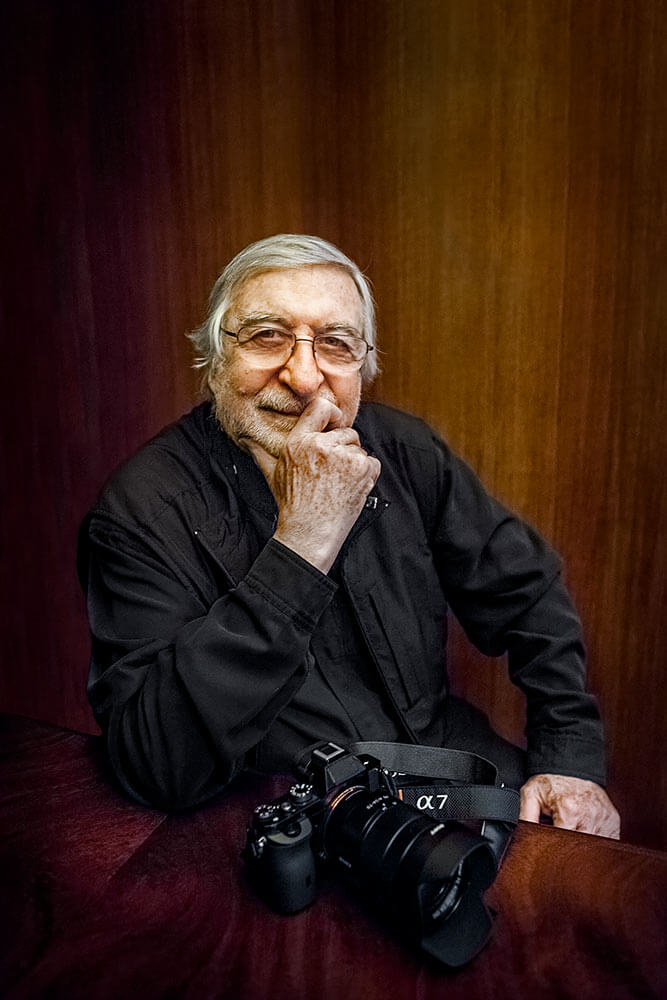Jean-Pierre Laffont attended the School of Graphic Art in Vevey, Switzerland, where he graduated with a Master's Degree in Photography.
He was a founding member of the Gamma USA and Sygma Photo News agencies. For more than five decades, Laffont traveled the globe, covering the news, the people, and the social and economic issues of his time. His photos were published in the world's leading news magazines, including Le Figaro,
London Sunday Times, Newsweek, Paris Match, Stern, and
Time. He was named one of the one hundred most important people in photography. Among the numerous awards Laffont has received are the Overseas Press Club of America's Madeline Dane Ross Award, the World Press Photo General Picture Award, University of Missouri's World Understanding Award and First Prize from the New York Newspaper Guild. In 1996 he was honored with the National French Order of
Chevalier des Arts et des Lettres (a Knight in the National French Order of Arts and Letters). In 2016 Jean Pierre was named
International Photographer of the Year of the Pingyao Photo Festival in China. In 2020 he received
The Lucie Award for
Achievement in Photojournalism and The Visa D'Or Award du Figaro Magazine for
Lifetime Achievement.
Laffont resides in New York with his wife Eliane, his daughter and his two granddaughters.
Awards and Honors:
1962: Cross for Military Valor for his humanitarian acts during the Algerian War
1979: First Prize: New York Newspaper Guild, for "Child Labor"; Overseas Press Club: Madeline Dane Ross award, for originating the use of photography to raise awareness of child labor conditions around the world.
1980: World Press: First Prize, General Picture category; University of Missouri, School of Journalism: First Prize, World Understanding Award
1996: French National Order of Merit: named Chevalier de l'Ordre des Arts et des Lettres
2016: International Photographer of the year of The Pingyao Photo Festival; China.
2020: Lucie Award for Achievement in Photojournalism.
2020: Visa D'Or Award du Figaro Magazine for Lifetime Achievement.
Bibliography:
Contribution to the A Day in the Life Series (HarperCollins):
1983: A day in the life of Hawaii
1984: A day in the life of Canada
1985: A day in the life of Japan
1986: A day in the life of United States
1987: A day in the life of Spain
1987: A day in the life of USSR
1989: A day in the life of China
1990: A day in the life of Italy
1991: A day in the life of Ireland
1992: A day in the life of Hollywood
Other Selected Publications:
1986: The Long March (Intercontinental Press); in commemoration of the 50th anniversary of Mao Zedong's historical Long March
1989: Trois Jour en France (Nathan/France)
1992: America Then and Now (Cohen/HarperCollins)
1999: Les 100 photos du Siècle (Editions du Chêne)
2003: America 24/7 in Manhattan (NY State)
2011: The New York Times Magazine: Photographs (Aperture Foundation)
2013: 40 ans de Photojournalisme: Generation Sygma (Editions de La Martinière/France)
Monographs:
1976: CB Bible, Porter Bibb (Doubleday)
1981: Women of Iron (Playboy)
2008: Jean-Pierre Laffont Foreign Correspondent (Editions C.D.P/France)
2014: Photographer's Paradise: Turbulent America 1960-1990: (Glitterati) named best picture book by The Lucie Awards
2017: New York City Up and Down: (Glitterati)
2019: Nos Stars en Amèrique Cartes postales de Jean Pierre Laffont: (Editions de La Martinière)
For special print requests please contact us directly.
